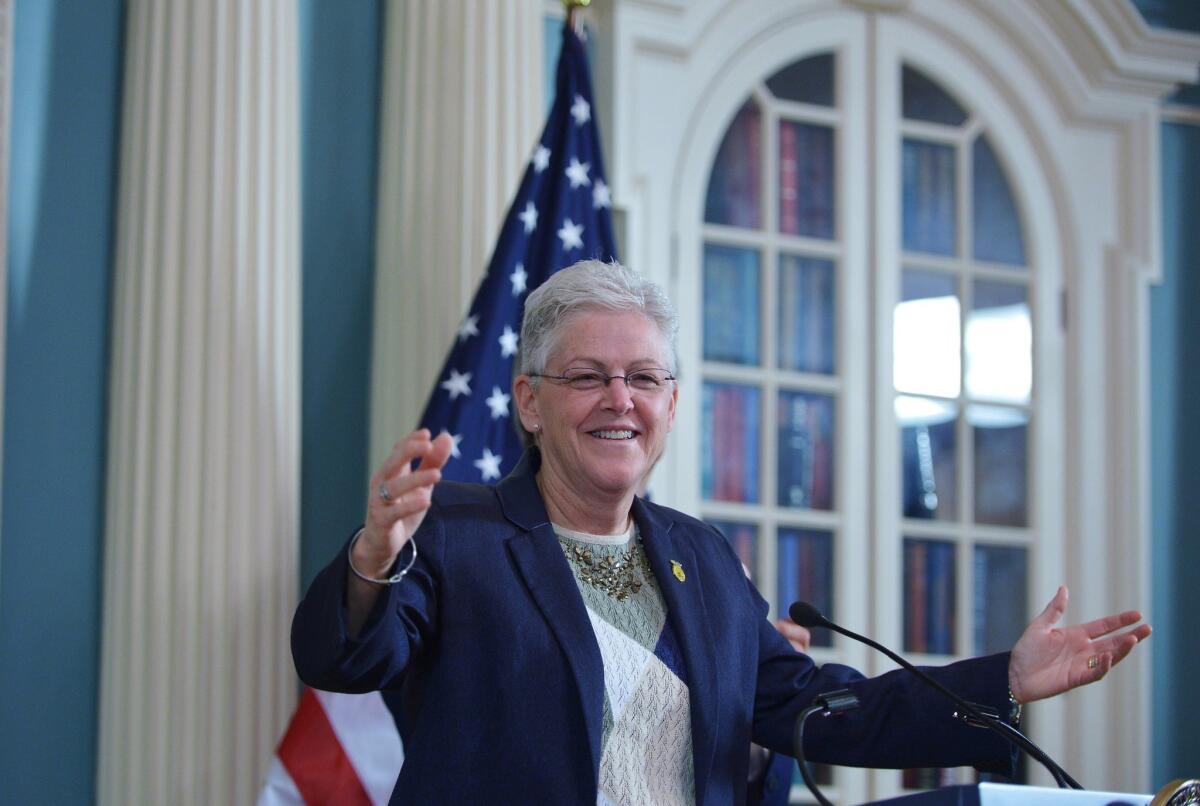Op-Ed: There’s an easy way to untangle regulatory knots

- Share via
As if federal budget negotiations weren’t messy enough, President Obama is hoping to use the process simultaneously to untangle regulatory knots, starting with food safety.
His 2016 budget proposal lays out how a dozen or so agencies, enforcing more than 30 laws, share responsibility for the safety of our food supply. For example, regulation of frozen cheese pizzas rests with the Food and Drug Administration, while the U.S. Department of Agriculture assumes oversight when pizzas have pepperoni on them. The president’s budget would put the USDA’s and FDA’s food-safety functions under one roof.
If Obama succeeds, it would be a partial victory against long-lamented overlapping and redundant federal regulations. But even this seemingly logical consolidation faces long odds. Agency reorganizations raise pitched turf battles in Washington, not only between parts of the executive branch but also in Congress, where reorganization necessarily forces some subcommittee chairs to give up their agency oversight authority.
Congress and the president have a much more politically feasible option: pass a law giving federal agencies authority to harmonize their rules and regulatory activities.
In recent decades, big regulatory reorganizations have come about only in the wake of major crises: the creation of the Department of Homeland Security after 9/11, the overhaul of the Minerals Management Service after the Deepwater Horizon oil spill and the creation of the Financial Stability Oversight Council after the financial meltdown. Surely it would be better for everyone if government could improve its coordination without waiting for a disaster to strike.
As a model, Congress could look to international trade practices. To ease the flow of goods between countries that have different rules for the same goals (such as product safety), trade partners agree that compliance with one country’s standards will satisfy the other country’s as well. It’s called a “mutual recognition agreement.”
Congress could pass a domestic version of that same idea, a “harmonization statute.” Such a law would let federal agencies work out their areas of regulatory overlap on their own. They’d have to run any agreements through notice-and-comment rule-making. After that step, compliance with one agency’s rules could satisfy the similar demands from the other agency.
A harmonization law is not as politically sexy as a massive overhaul of big bureaucracies, but it would give agencies authority to rationalize their oversight on a case-by-case basis.
It’s grounded in precedent, too. In civil disputes with overlapping jurisdictions, judges apply well-established “conflict of laws” principles to determine which law predominates. Congress likewise took a harmonization approach in 1996 when it told regulators to consider adopting existing voluntary standards, such as those created by industry or private groups, before writing entirely new regulations.
Relying on existing regulations means the government can use its limited resources more wisely while lessening the burdens of compliance for businesses and other regulated organizations.
Occasionally agencies have, on their own, chosen to defer to the existence of other regulatory schemes. The Environmental Protection Agency, for example, determined a few years ago that it did not need to inspect dairy operations for leaky milk tanks because the USDA and state public health agencies were already doing that.
With hundreds of federal agencies creating thousands of new rules every year, plenty of additional harmonization opportunities surely exist. Government regulators, however, do not always have incentives to rely on other agencies’ regulatory actions. Nor do they necessarily have the legal authority to do so.
Those who want a more rational system of regulation can continue to work toward large organizational change, like that proposed by Obama. But a more achievable strategy would be for Congress to pass simple legislation giving regulatory agencies clear authority to smooth out their overlaps and inconsistencies one rule at a time.
Cary Coglianese is a law professor and director of the Penn Program on Regulation at the University of Pennsylvania and the founder of RegBlog.org.
Follow the Opinion section on Twitter @latimesopinion and Facebook
More to Read
A cure for the common opinion
Get thought-provoking perspectives with our weekly newsletter.
You may occasionally receive promotional content from the Los Angeles Times.






